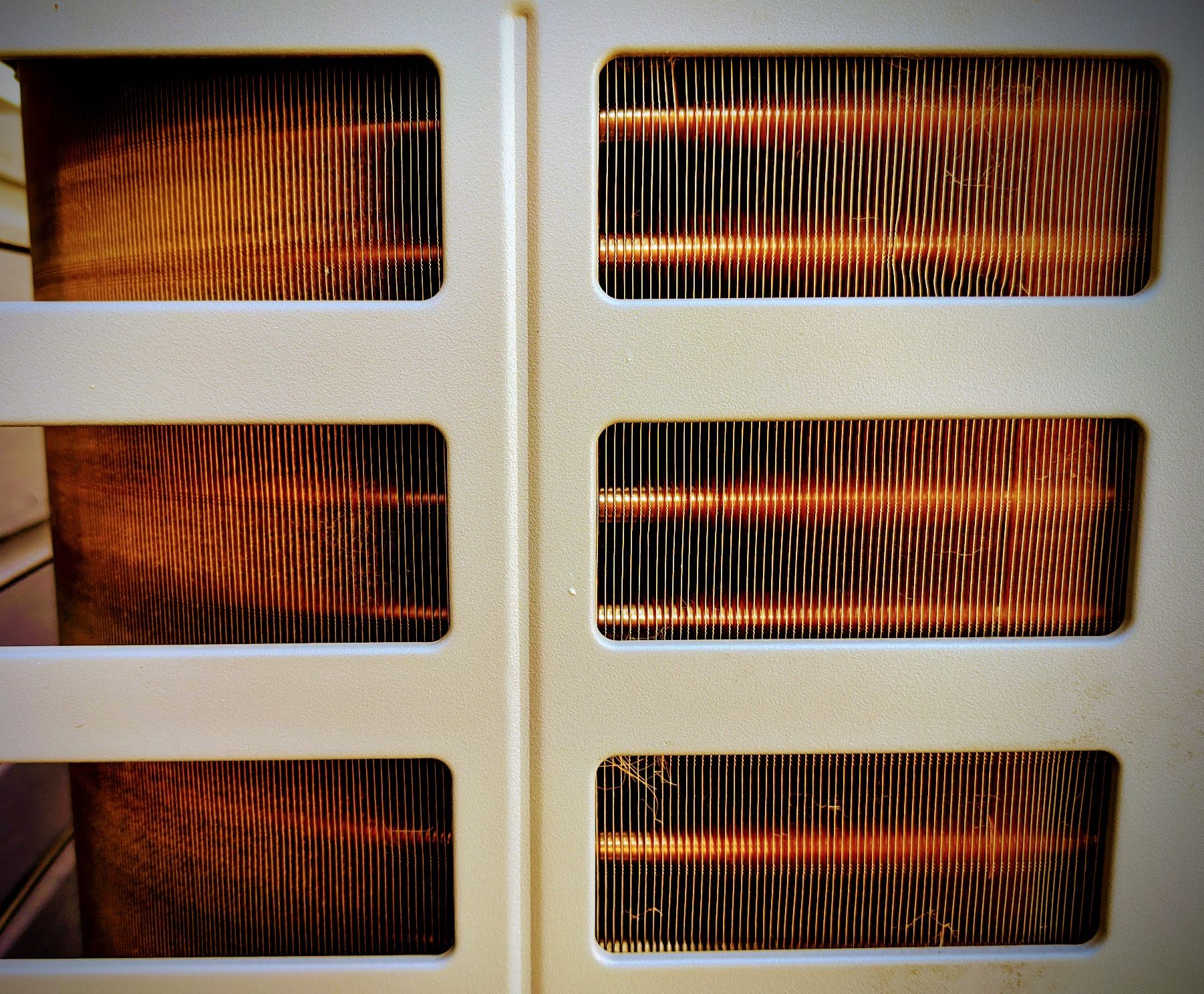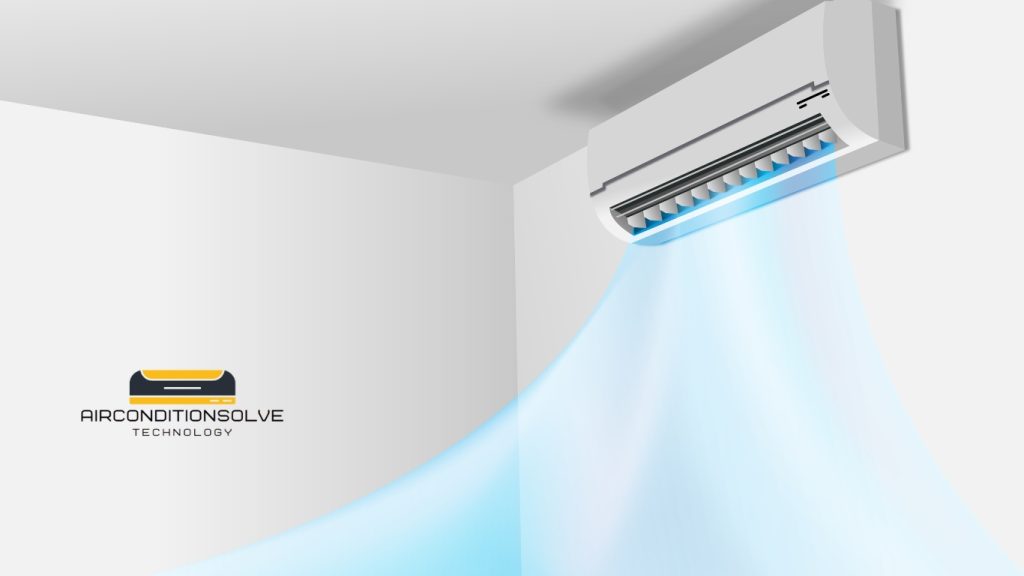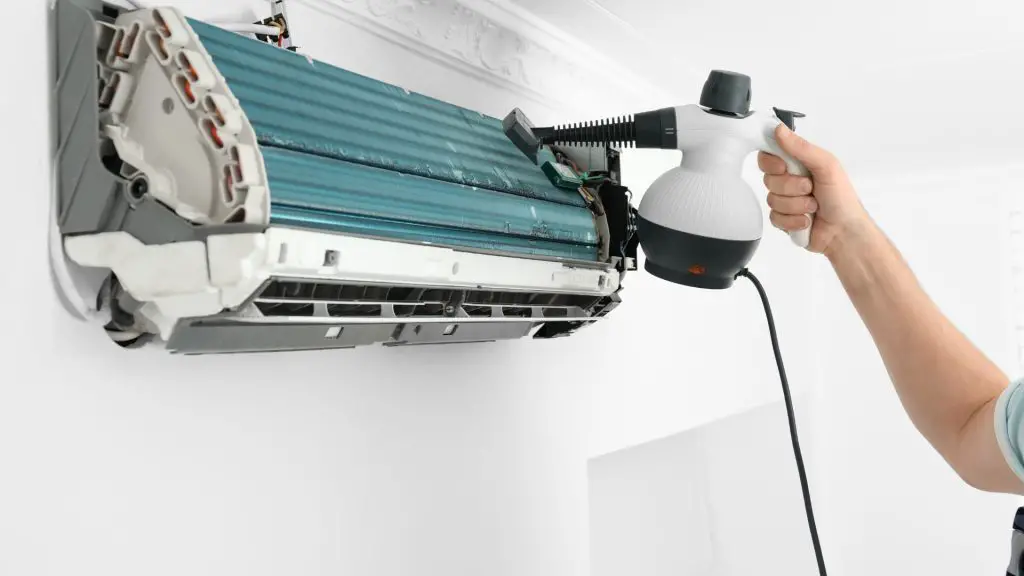Installing a ductless AC is a straightforward process that involves mounting the indoor and outdoor units, connecting refrigerant lines, and wiring the electrical components. Ductless ACs offer an efficient and cost-effective cooling solution, particularly for homes without existing ductwork.
With proper installation, these systems provide efficient and zoned cooling while minimizing energy consumption. In this guide, we will provide you with the step-by-step instructions to install a ductless AC system, ensuring that you have a comfortable and climate-controlled space.
From choosing the right location for the indoor and outdoor units to connecting the refrigerant lines and electrical wiring, we will cover all the essential aspects of ductless AC installation in detail. So, let’s get started and make the installation process hassle-free for you.

Credit: www.mrmoneymustache.com
Benefits Of Ductless Air Conditioning Systems
Having a reliable and efficient air conditioning system is essential for maintaining a comfortable indoor environment, especially during hot summer months. While traditional central air conditioning systems have long been the go-to option, ductless air conditioning systems are gaining popularity due to their numerous advantages. In this section, we will explore the key benefits of opting for a ductless air conditioning system.
Energy Efficiency
When it comes to cooling your home, energy efficiency is a crucial factor to consider. Ductless air conditioning systems are known for their exceptional energy efficiency, making them an attractive option for homeowners looking to reduce their energy consumption and utility bills. Unlike traditional central air conditioning systems, which cool the entire home through a network of ducts, ductless systems can cool individual rooms or zones, allowing for precise temperature control. This targeted cooling approach eliminates the energy losses typically associated with ductwork, resulting in lower energy usage and cost savings. Additionally, ductless systems often come with advanced features, such as programmable timers and smart thermostats, further optimizing energy efficiency.
Improved Indoor Air Quality
The quality of the air we breathe indoors directly impacts our health and well-being. Traditional air conditioning systems with ductwork can accumulate a significant amount of dust, allergens, and other pollutants over time. When the system circulates the air, these contaminants can be distributed throughout the home, leading to poor indoor air quality. Ductless air conditioning systems, on the other hand, eliminate this concern as they do not rely on ductwork. Each indoor unit is equipped with a built-in filter that effectively captures dust, pollen, and other airborne particles, improving the overall air quality. Furthermore, regular filter cleaning or replacement is a simple maintenance task that can be easily performed by homeowners, ensuring the air remains clean and fresh.
Versatile Installation Options
One size does not fit all when it comes to air conditioning installation. Ductless air conditioning systems offer versatile installation options that cater to various home layouts and cooling requirements. As the name suggests, ductless systems do not require extensive ductwork. Instead, they consist of an outdoor unit and one or multiple indoor units that can be installed in different areas of the home. These indoor units can be mounted on walls, ceilings, or even recessed into the structure, allowing for flexibility and optimal use of space. Whether you have a small apartment or a multi-level house, ductless air conditioning systems can be tailored to suit your specific needs and preferences.
In conclusion, ductless air conditioning systems offer significant benefits over traditional central air conditioning systems. Their energy efficiency, improved indoor air quality, and versatile installation options make them an excellent choice for homeowners seeking modern, cost-effective, and user-friendly cooling solutions.

Planning For Ductless Ac Installation
This guide provides step-by-step instructions for planning and executing a ductless AC installation. From assessing your cooling needs to choosing the right system and finding a professional installer, this comprehensive guide covers all the essential aspects of a successful ductless AC installation.
Assessing Room Size And Layout
Before embarking on your ductless AC installation journey, it is crucial to assess the size and layout of the rooms you wish to cool. Determining the room size will help you choose the appropriate capacity for your units, ensuring optimal comfort and energy efficiency.
One way to assess room size is by calculating the square footage. Measure the length and width of each room and multiply the two measurements to find the square footage. Take note of any irregularities or obstructions in the room that may affect airflow. These could include furniture placement, windows, and doors.
Another factor to consider is the ceiling height. High ceilings require more cooling power to effectively distribute air throughout the room. While ductless AC units are generally suitable for most ceiling heights, it’s essential to take this into account when selecting the system capacity.
Determining The Number Of Units Needed
Once you have assessed the size and layout of your rooms, you can determine the number of ductless AC units needed. This will depend on the cooling requirements of each space and the size of the unit you choose.
A general rule of thumb is that for each 400 to 500 square feet of space, one unit with a cooling capacity of 12,000 BTUs (British Thermal Units) is usually sufficient. However, factors such as room usage, insulation levels, and sun exposure may also play a role in the number and capacity of units needed.
To get a more accurate estimate of the number of units required, it is advisable to consult with a professional HVAC technician. They can conduct a comprehensive assessment of your space and provide expert advice tailored to your specific needs.
Selecting The Right Location For Installation
Choosing the ideal location for installing your ductless AC units is crucial for optimal performance and longevity. Consider the following factors when selecting the installation spots:
- Proximity to electrical outlets: The indoor and outdoor units require power connection, so ensure that there are electrical outlets nearby to avoid complicated wiring.
- Accessibility for maintenance: Select locations that allow easy access for routine maintenance and cleaning. This ensures efficient operation and extends the lifespan of your units.
- Avoiding direct sunlight: Try to place the indoor units away from direct sunlight, as this can cause temperature fluctuations and affect the overall performance of the system.
- Proper airflow and distribution: Install the indoor units where airflow can circulate freely throughout the room, avoiding any obstructions such as high furniture or curtains.
- Avoiding obstructions: Ensure that the installation spots are clear of any obstructions like pipes, vents, or structural elements to maintain proper airflow.
Keep in mind that a professional technician can offer valuable insights and guidance to help you determine the most suitable locations for your ductless AC units based on your specific needs and the layout of your home.
Step-by-step Ductless Ac Installation Process
Installing a ductless AC system can provide you with efficient cooling and heating without the need for ductwork. Whether you’re a DIY enthusiast or a professional technician, following a step-by-step installation process will ensure a successful installation. In this guide, we’ll take you through each step of the ductless AC installation process, from gathering necessary tools and materials to testing and troubleshooting the system.
Gathering Necessary Tools And Materials
Before you begin the installation, it’s essential to gather all the necessary tools and materials. Having everything you need readily available will save you time during the process. Here are the tools and materials you’ll need:
- Drill
- Screwdriver
- Measuring tape
- Level
- Tube cutter
- Ratchet wrench
- Ductless AC unit
- Mounting brackets
- Piping and insulation
- Flare nuts
- Electrical wires
- Condensate drain kit
Preparing The Installation Area
Once you have all the necessary tools and materials, it’s time to prepare the installation area. Here’s what you need to do:
- Choose the optimal location for the indoor unit. It should be centrally located in the room and away from direct sunlight or heat sources.
- Mark the positions for the mounting brackets. Use a level to ensure they are perfectly horizontal.
- Drill holes for the mounting brackets and install them securely.
- Run the piping and insulation from the outdoor unit to the indoor unit, ensuring they are properly secured and insulated.
Mounting The Indoor Unit
Now that the installation area is prepared, it’s time to mount the indoor unit. Follow these steps:
- Place the unit on the mounting brackets and secure it using the provided screws.
- Ensure the unit is level using a measuring tape and adjust if necessary.
- Connect the piping and insulation to the unit, making sure to tighten the flare nuts securely.
- Connect the electrical wires according to the manufacturer’s instructions.
Connecting The Indoor And Outdoor Units
With the indoor unit securely mounted, it’s time to connect it to the outdoor unit. Here’s how:
- Locate the outdoor unit in an appropriate location, ensuring it is level and on a stable surface.
- Connect the piping and insulation from the indoor unit to the outdoor unit, making sure to tighten the flare nuts securely.
- Connect the electrical wires, following the specific wiring diagram provided by the manufacturer.
Testing And Troubleshooting
Once the connections are made, it’s crucial to test the system and troubleshoot any issues that may arise. Here’s what you need to do:
- Turn on the power supply to the outdoor unit.
- Check for any leaks in the piping connections and repair if necessary.
- Test the functionality of the system by adjusting the temperature settings and verifying that both the indoor and outdoor units are working correctly.
- If any issues occur, consult the troubleshooting guide provided by the manufacturer or seek professional assistance.
Following these step-by-step guidelines for ductless AC installation will help you ensure a smooth and successful installation process. Remember, if you’re not confident in your abilities, it’s always best to seek professional help to guarantee a safe and efficient installation.
Common Mistakes To Avoid During Ductless Ac Installation
When it comes to installing a ductless AC unit, it is crucial to avoid common mistakes that can lead to inefficiency, discomfort, or even damage to your system. In this guide, we will highlight some of the most common mistakes to help you ensure a smooth and successful ductless AC installation.
Improper Sizing Of The Unit
One of the most vital factors in a ductless AC installation is ensuring that the unit is properly sized for the space it will be cooling. Incorrect sizing can lead to inadequate cooling or excessive energy consumption. To avoid this mistake, it is important to calculate the cooling capacity needed for your specific area.
In order to determine the correct size, consider factors such as the square footage of the room, insulation levels, and the number of windows and doors. It is advisable to consult with a professional HVAC technician who can perform a load calculation and recommend the appropriate unit size for your needs.
Furthermore, keep in mind that bigger is not always better. Oversized units are prone to short-cycling, which can cause premature wear and tear on the system. Therefore, it is crucial to avoid the temptation to go for a larger unit without proper consideration.
Incorrect Placement Of The Indoor Unit
The indoor unit’s placement plays a significant role in the overall efficiency and comfort of your ductless AC system. It is important to avoid placing the indoor unit in locations that can hinder efficient airflow or obstruct the unit’s functionality.
- Placing the unit near heat sources such as direct sunlight, lamps, or electronics, as this can cause inaccurate temperature readings and lead to increased energy consumption.
- Positioning the unit too close to furniture or other objects, which can obstruct airflow and compromise the system’s ability to cool the room evenly.
- Installing the unit in a high-traffic area or directly above doors or windows, as this can disrupt the airflow and reduce the unit’s efficiency.
To ensure optimal performance of your ductless AC unit, consult the manufacturer’s guidelines or seek professional advice on the best placement for your specific needs.
Inadequate Electrical Wiring
Proper electrical wiring is crucial for the safe and efficient operation of your ductless AC unit. Inadequate or incorrect wiring can lead to system malfunctions, electrical hazards, and even damage to the unit.
When installing a ductless AC system, it is essential to ensure that the electrical wiring meets the manufacturer’s specifications and local electrical codes. This includes properly sizing the wires, using the appropriate connectors, and securely fastening the connections.
If you are not experienced in electrical work, it is highly recommended to hire a licensed electrician to handle the wiring installation for you. A professional electrician will ensure that the electrical connections are correctly made, reducing the risk of electrical problems and ensuring the longevity of your ductless AC system.
Maintenance And Care For Ductless Ac Systems
Proper maintenance and care are essential for keeping your ductless AC system running smoothly and efficiently. Regular maintenance not only maximizes the lifespan of your system but also ensures optimal performance and energy efficiency. In this section, we will discuss three crucial aspects of maintaining and caring for your ductless AC system: regular cleaning of filters and coils, checking refrigerant levels, and scheduling professional maintenance.
Regular Cleaning Of Filters And Coils
Regularly cleaning the filters and coils of your ductless AC system is vital to its longevity and efficiency. Over time, dust, dirt, and debris can accumulate on the filters and coils, obstructing the airflow and reducing the system’s cooling capacity. To prevent this, it is recommended to clean these components every two to four weeks during peak cooling season and once a month during other times of the year.
To clean the filters, follow these simple steps:
- Turn off the unit and unplug it from the power source.
- Remove the filters from their designated slots, usually located on the front panel of the indoor unit.
- Use a vacuum cleaner or a soft brush to gently remove the dust and dirt from the filters.
- If the filters are heavily soiled, you can wash them with mild soap and water. Allow them to dry completely before reinstalling.
- After cleaning or replacing the filters, carefully insert them back into the unit, ensuring they are securely in place.
- Finally, plug in the unit and turn it on.
In addition to cleaning the filters, it is also essential to keep the coils clean. Dirty coils can restrict airflow and reduce cooling efficiency. To clean the coils, you can use a soft brush or a vacuum cleaner to remove any accumulated debris. If the coils are heavily soiled, you may need to contact a professional HVAC technician for assistance.
Checking Refrigerant Levels
Proper refrigerant levels are crucial for the optimal operation of your ductless AC system. Too little or too much refrigerant can strain the system and lead to decreased efficiency. Regularly checking the refrigerant levels ensures that your system is running at peak performance.
To check the refrigerant levels, you should consult the manufacturer’s guidelines or hire a professional HVAC technician. They will use specialized equipment to measure the refrigerant levels accurately. If the levels are low, it may indicate a leak in the system that needs to be addressed promptly.
Scheduling Professional Maintenance
While regular cleaning and maintenance tasks can be performed by homeowners, scheduling professional maintenance for your ductless AC system is highly recommended. Professional maintenance ensures that all components of your system are in optimal condition and helps identify any potential issues before they become major problems.
During a professional maintenance visit, an HVAC technician will inspect, clean, and lubricate various components of your ductless AC system. They will also check for any wiring issues, refrigerant leaks, or other potential problems that could affect the performance and lifespan of your system.
Most manufacturers recommend scheduling professional maintenance at least once a year, preferably before the start of the cooling season. By adhering to this schedule, you can ensure that your ductless AC system continues to operate efficiently and effectively for years to come.
Frequently Asked Questions Of Ductless Ac Installation Guide
How Does Ductless Ac Work?
Ductless AC systems use an outdoor unit to deliver cool air inside through wall or ceiling-mounted units. These units blow out cool air into different areas of the room. The absence of ductwork allows for efficient cooling and customizable comfort.
What Are The Advantages Of Ductless Ac?
Ductless AC offers several advantages, such as energy efficiency, zoning capabilities, easy installation, and improved indoor air quality. Since they don’t require ductwork, they are more flexible in terms of installation and can help reduce energy costs by cooling specific areas rather than the entire house.
How Much Does Ductless Ac Installation Cost On Average?
The cost of ductless AC installation varies depending on factors like the size of the system, the number of units needed, and the complexity of the installation. On average, the installation cost can range from $2,500 to $7,500. It’s best to get a professional estimate tailored to your specific needs.
Conclusion
To sum up, installing a ductless air conditioning system is a cost-effective and convenient solution for maintaining a pleasant indoor environment. By following the steps outlined in this guide, you can ensure a successful installation. From choosing the right unit to positioning it correctly, you can enjoy the benefits of a ductless AC system, such as energy efficiency and customizable comfort.
So, don’t hesitate to implement this modern cooling technology and improve your home’s comfort today.

